Although we attended the accessories conference in March (and although I was fortunate enough to take part in a guided tour of the exhibit with Linda Baumgarten during that week), we were kept so busy during the conference that it wasn't until our return visit to Colonial Williamsburg last week that I finally got the opportunity to go through "Fashion Accessories from Head to Toe" in great detail, at my own preferable (and prodigiously slow) museum-going pace. I know a number of bloggers have posted about their visits to the exhibit, and I realize that there are many, many spectacular photos of a number of the items already online in various locations, so I won't go into much depth here. Hardly wishing to neglect such an important display of rarely-seen items, however, I thought I'd just offer a few thoughts and photos to supplement what's already out there.
One of the fully accessorized figures in the exhibit,
which helps to contextualize not only the evolution of dress
and its accessories, but also the various functions each served.
See CW's Historic Threads listing for more.
See CW's Historic Threads listing for more.
There are three novel features of this exhibit that I really admire and would love to see emulated by future exhibitions on fashion and dress at other museums. These include an "introductory" display case that juxtaposes 21st-century accessories with their 18th-century counterparts; a stunning "timeline" of fully dressed and accessorized figures demonstrating the evolution of fashion from the last quarter of the 18th century through the first quarter of the 19th, and a short film (much of which can be seen here) that visually enacts the process of dressing and accessorizing in the 18th century by bringing a period fashion print quite literally to life.
The 18th century meets the 21st...
By providing contextualization for the items - many of them genuine curiosities undoubtedly almost unidentifiable to most 21st-century eyes - each of these three features positions the museum visitor sufficiently within the compass of 18th-century dress to imagine and integrate the identity and the function of the antique accessories on view. One of the problems raised during the conference focused on traditional exhibition techniques, in which museums showcase items of dress as separate entities, each distinct from another; a gown, for instance, all too frequently appears unadorned and standing alone, while an apron lies across the room in one display case, jewelry in another, and hats in another. This isolationist approach to fashion, the conference speakers collectively argued, provides a highly inaccurate sense of the fashions of the past because the visitor remains incapable of understanding how dress and its various accessories functioned not only independently, but alongside each other. Baumgarten's curatorial approach to this project is highly successful in bringing to life the most accurate representation of Fashion and fashion; for another superb current example, check out "Napoleon and the Empire of Fashion" (and vote to bring it to NYC!).
A French pocketbook (1800-1830), beautifully embroidered.
The Valentines inside are original. Be sure to look at the
CW Historic Threads listing for this item to see some close-ups and for more details.
As I mentioned earlier in one of the conference postings, there will not be an exhibit catalogue, which is most unfortunate because we're in desperate need of more serious scholarship on accessories and the minutiae of fashionable dress, and the amount of work that went into mounting this unique exhibit is obviously extraordinary. The good thing is, though, that the exhibit is up for almost two years (until 31 December 2012) to provide a maximum opportunity to see it. If you can manage a trip to CW before it closes, the exhibit is well worth the effort! Photos can't do many of these intricate and clever little items justice. If you can't make it to the exhibit, be certain not to miss the "Historic Threads" online exhibit (which features a detailed look at a number of items from the museum display) and CW's vodcast on it (which includes a conversation with Linda Baumgarten, the exhibit's curator).
I adore this little workbag (1760-1780), which features a
drawer that pulls out of the right side and a collection of other
secret and useful little compartments. For more on this item
Additional photos of the exhibit can be found on our flickr set (it's a limited selection, since there are countless others already on flickr), along with piccies from our March and June/July visits to CW. Enjoy!

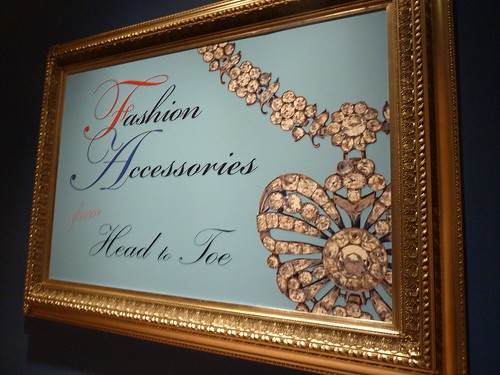
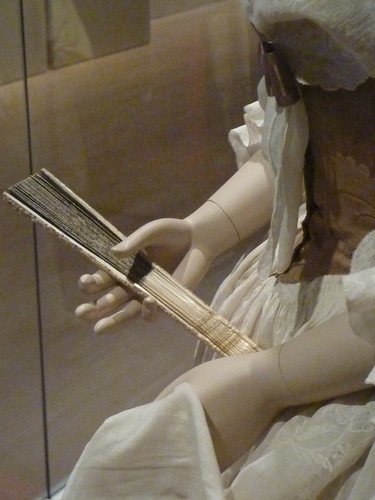
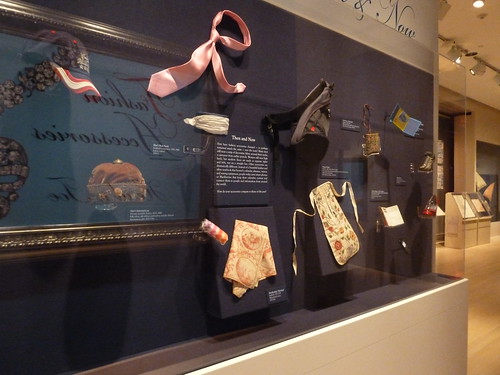
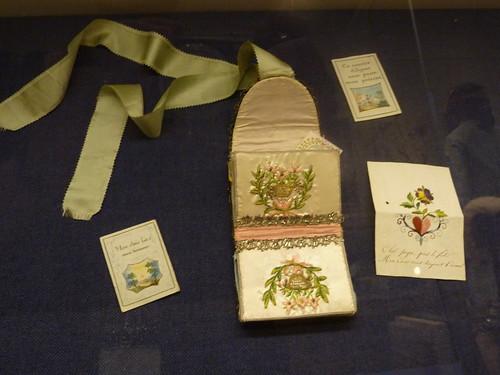
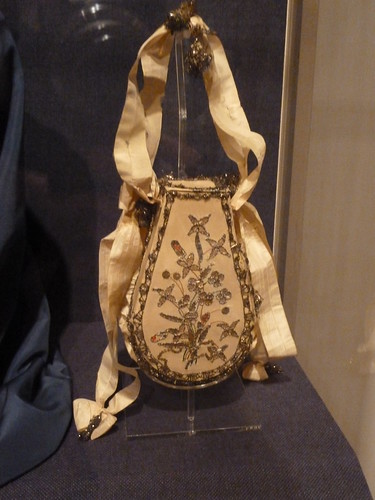
No comments:
Post a Comment